Abstract
Concentrations of ammonia and the chlorine stabilizer, cyanuric acid, which could be expected in swimming pools decreased the rate of kill by chlorine of the potential pathogen, Pseudomonas aeruginosa. The effect of cyanuric acid increased as the concentration of chlorine decreased, a fact of significance from a public health view. Quaternary ammonium algcides had little effect on the kill rate of chlorine, but an organic mercury algicide had a synergistic effect with chlorine when the chlorine activity was stressed by the addition of ammonia or the use of 100 times the normal concentration of bacteria. The effect of natural waters, rain, beaches, and swimming pools on the kill rate by 0.5 mg of chlorine per liter indicated that a treatment time of 1 hr or more was required to kill 99.9% of 106 Pseudomonas cells per ml. The synergism of chlorine and the organic mercury algicide was also demonstrated with these waters and with sewage treatment plant effluents. The necessity of developing and using laboratory tests which simulate conditions in swimming pools with heavy loads of swimmers, as opposed to tests in chlorine demand-free conditions, is discussed. Samples taken from well-supervised swimming pools when the swimmer load had been especially high required treatment times of 1 to 3 hr to obtain 99.9% kills of the potential pathogen, P. aeruginosa, with 0.5 mg of chlorine per liter.
Full text
PDF
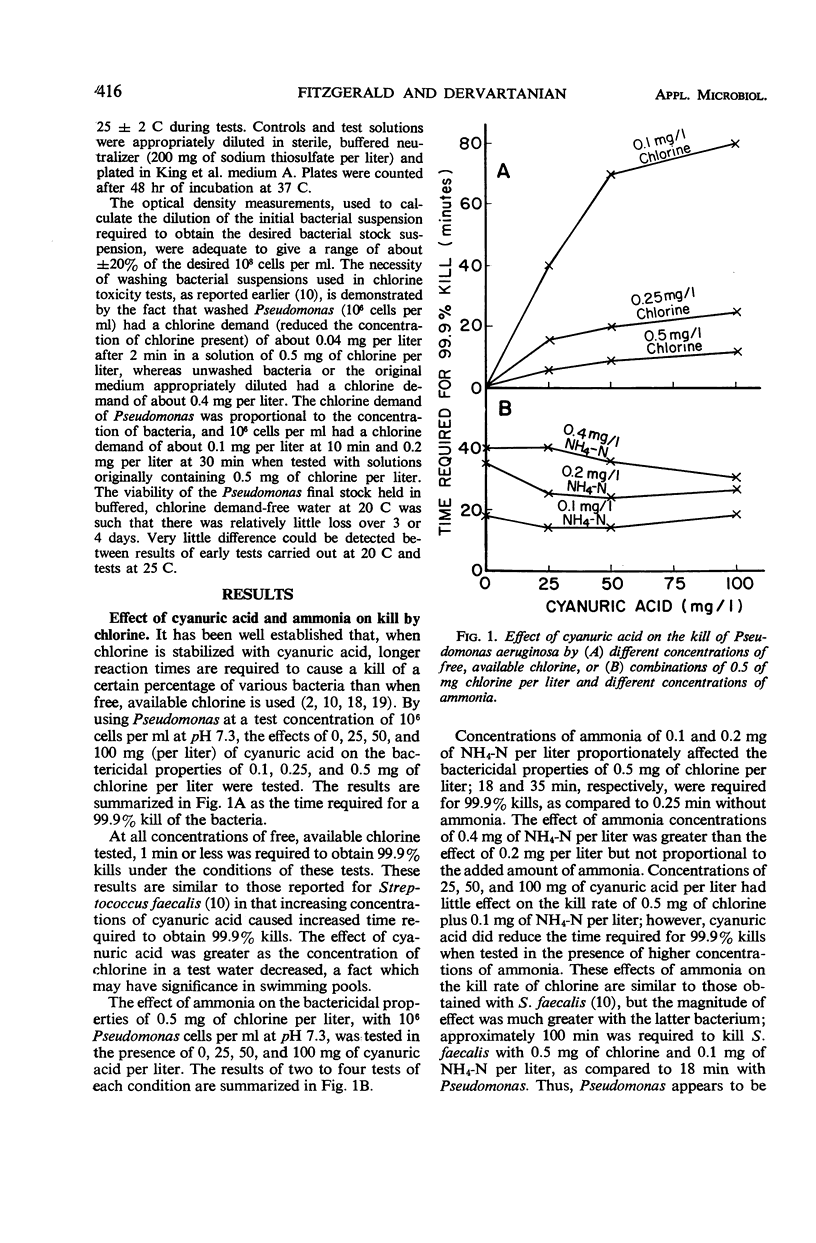
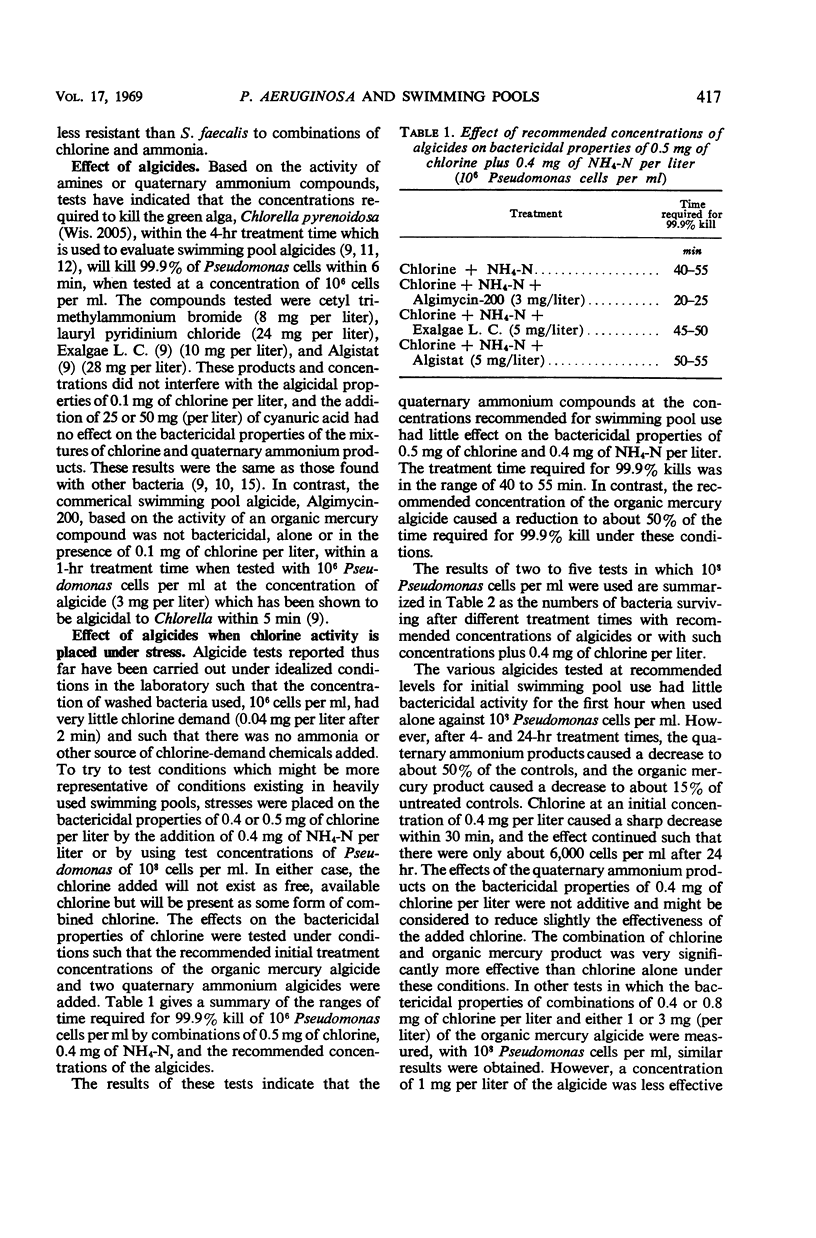
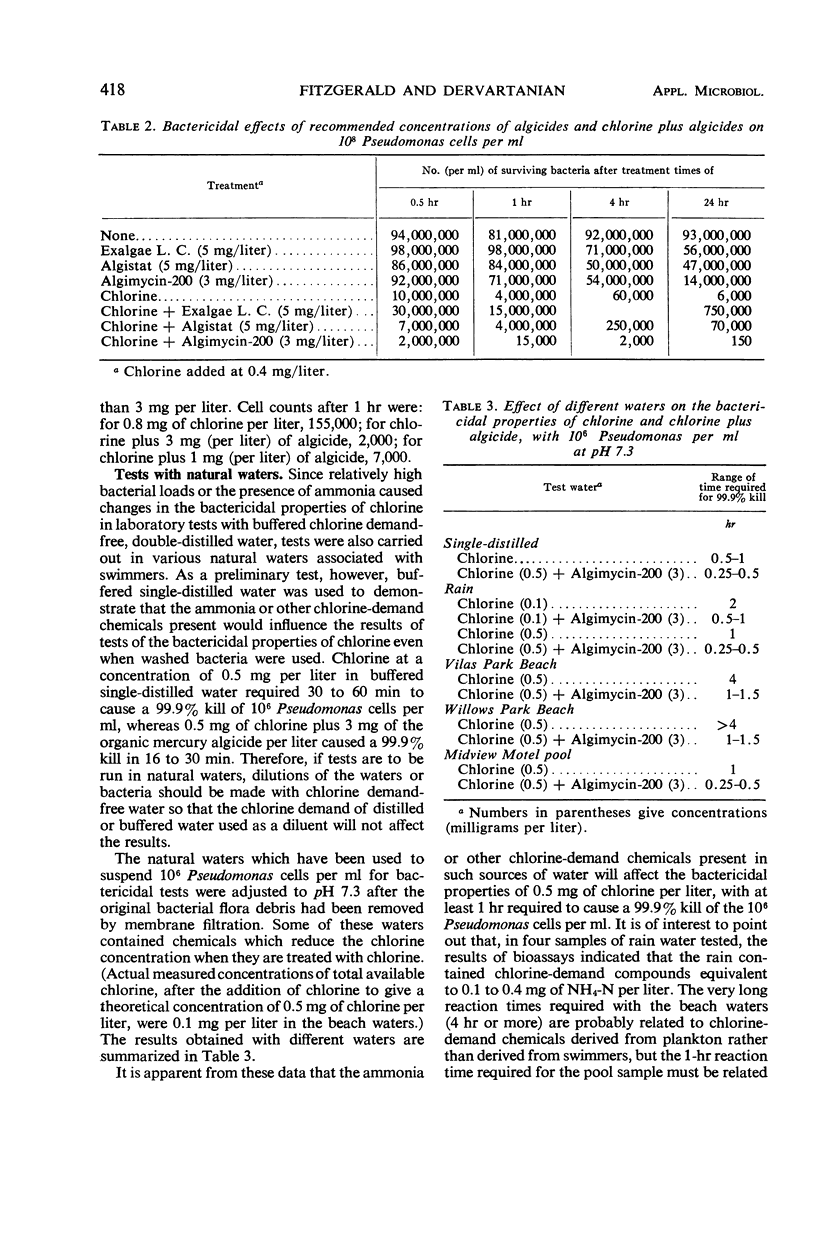
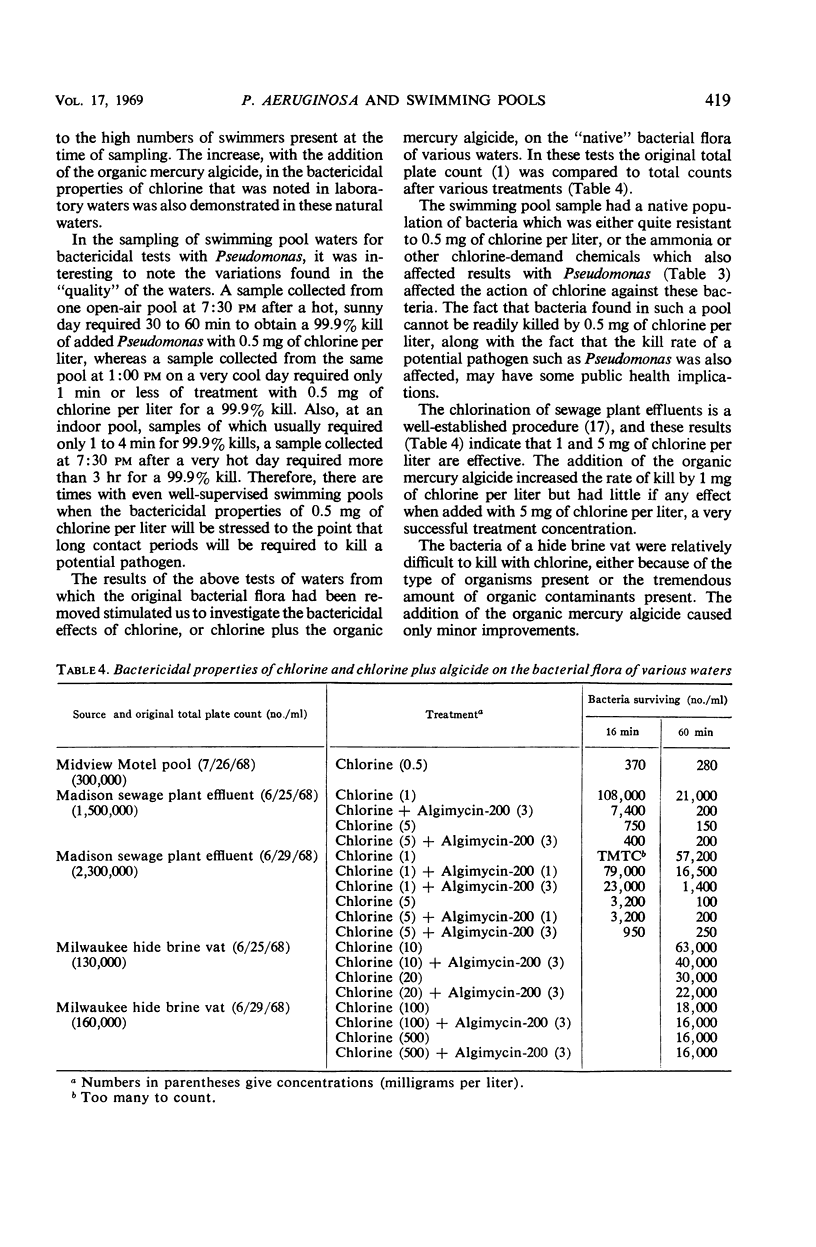
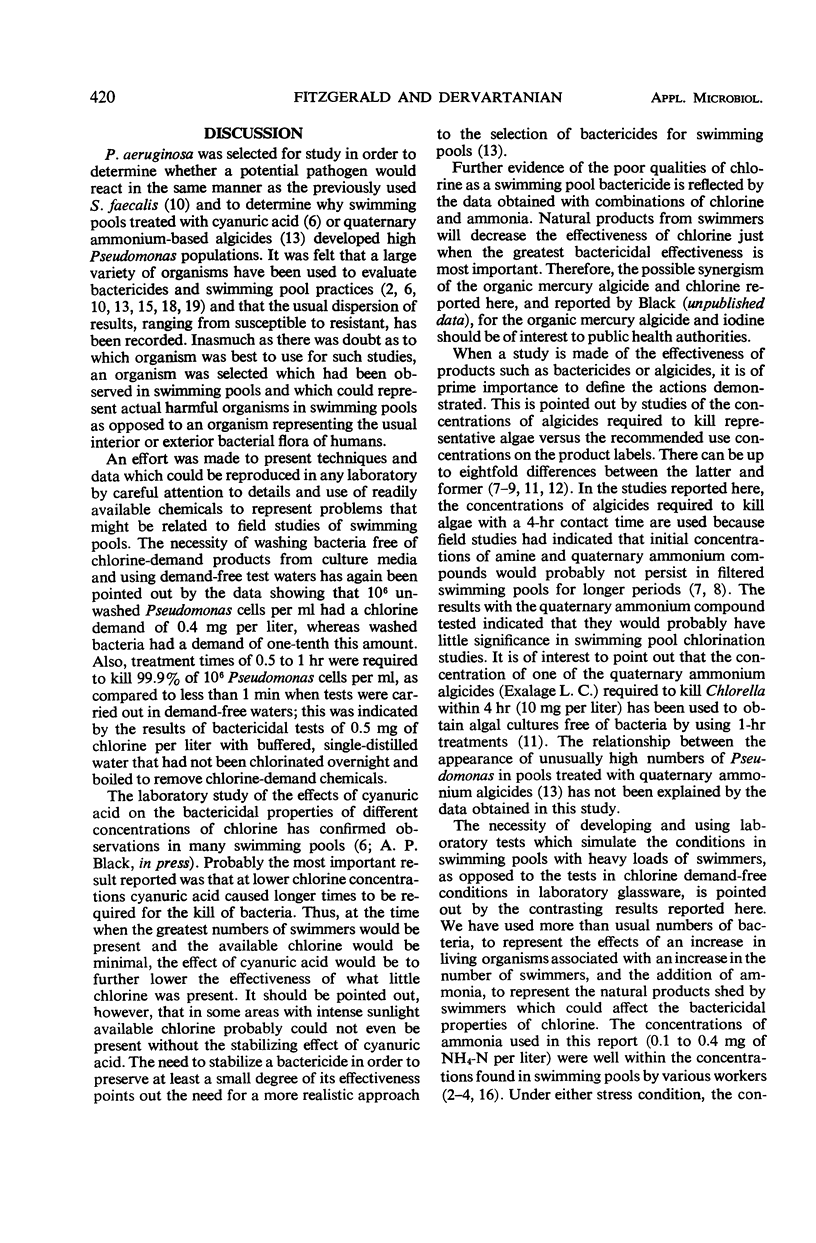
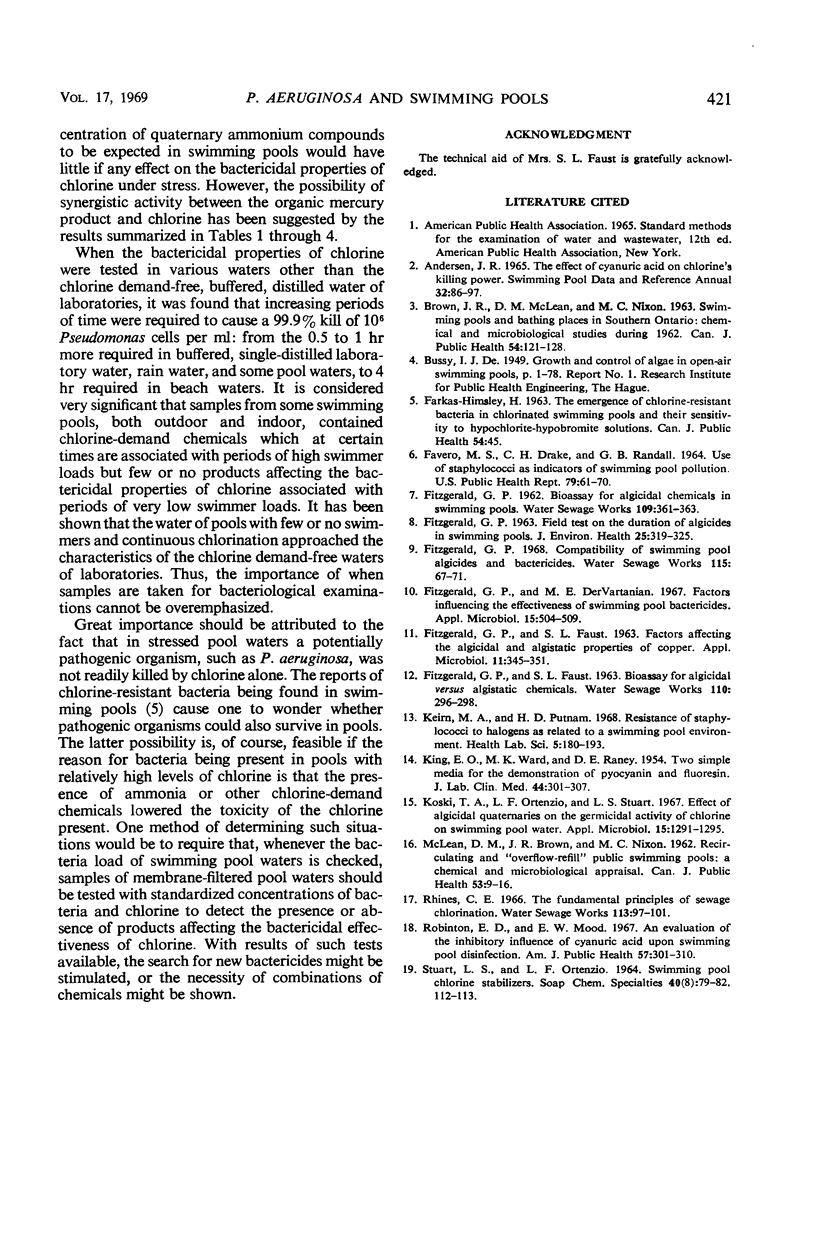
Selected References
These references are in PubMed. This may not be the complete list of references from this article.
- BROWN J. R., McLEAN D. M., NIXON M. C. Swimming pools and bathing places in southern Ontario: chemical and microbilogical studies during 1962. Can J Public Health. 1963 Mar;54:121–128. [PubMed] [Google Scholar]
- FAVERO M. S., DRAKE C. H., RANDALL G. B. USE OF STAPHYLOCOCCI AS INDICATORS OF SWIMMING POOL POLLUTION. Public Health Rep. 1964 Jan;79:61–70. [PMC free article] [PubMed] [Google Scholar]
- FITZGERALD G. P., FAUST S. L. Factors affecting the algicidal and algistatic properties of copper. Appl Microbiol. 1963 Jul;11:345–351. doi: 10.1128/am.11.4.345-351.1963. [DOI] [PMC free article] [PubMed] [Google Scholar]
- Fitzgerald G. P., DerVartanian M. E. Factors influencing the effectiveness of swimming pool bactericides. Appl Microbiol. 1967 May;15(3):504–509. doi: 10.1128/am.15.3.504-509.1967. [DOI] [PMC free article] [PubMed] [Google Scholar]
- KING E. O., WARD M. K., RANEY D. E. Two simple media for the demonstration of pyocyanin and fluorescin. J Lab Clin Med. 1954 Aug;44(2):301–307. [PubMed] [Google Scholar]
- Keirn M. A., Putnam H. D. Resistance of staphylococci to halogens as related to a swimming pool environment. Health Lab Sci. 1968 Jul;5(3):180–193. [PubMed] [Google Scholar]
- Koski T. A., Ortenzio L. F., Stuart L. S. Effect of algicidal quaternaries on the germicidal activity of chlorine on swimming pool water. Appl Microbiol. 1967 Nov;15(6):1291–1295. doi: 10.1128/am.15.6.1291-1295.1967. [DOI] [PMC free article] [PubMed] [Google Scholar]
- Robinton E. D., Mood E. W. An evaluation of the inhibitory influence of cyanuric acid upon swimming pool disinfection. Am J Public Health Nations Health. 1967 Feb;57(2):301–310. doi: 10.2105/ajph.57.2.301. [DOI] [PMC free article] [PubMed] [Google Scholar]


